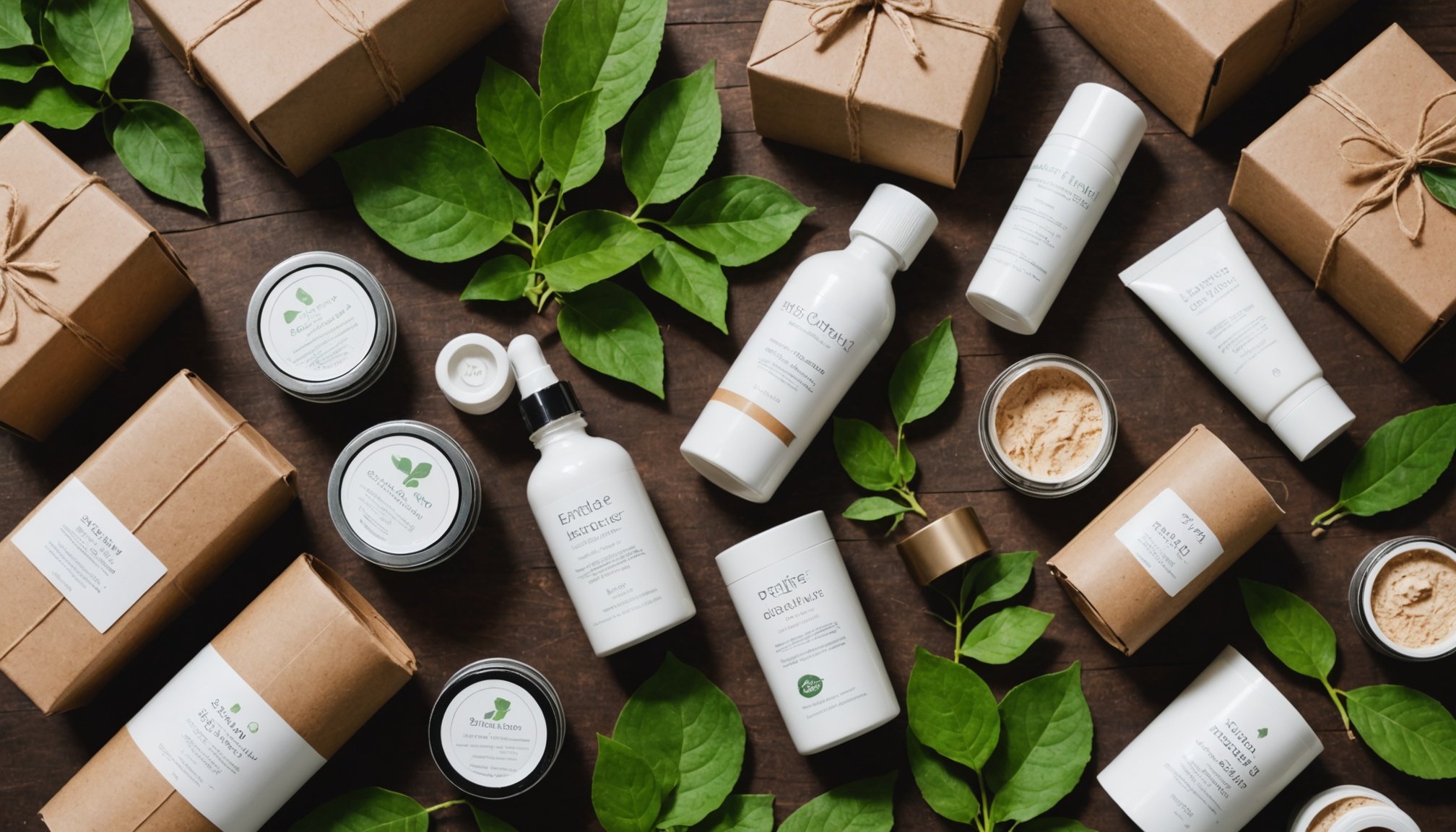Alternatives to Traditional Skincare Packaging
In recent years, there has been a noticeable shift towards more eco-conscious skincare packaging solutions, prompting the rise of refillable options, zero-waste products, and minimal packaging concepts. These alternatives play a significant role in reducing the environmental impact of packaging waste.
Refillable options encourage users to reuse containers, rather than discarding them after a single use. This approach not only lessens packaging waste but also typically results in reduced manufacturing emissions. Many brands now offer convenient refill programs, where consumers can replenish their skincare products at significantly lower costs.
Also to discover : Ultimate Knee Strengthening Routines for Women: Master Your Optimal Moves!
Zero-waste products, on the other hand, aim to eliminate waste entirely. These products often use innovative packaging designs, such as compostable or biodegradable materials, which quickly break down into non-toxic components. Brands dedicated to zero-waste principles commonly offer solid bars or powders, requiring less packaging.
The concept of minimal packaging focuses on reducing packaging materials to the bare necessities. This involves designing smaller, lighter packaging and eliminating excessive plastic and paper. Not only does minimal packaging support waste reduction, but it also aids in decreasing pollution from manufacturing and distribution processes.
Have you seen this : The Ultimate Women’s Activewear Fabric Guide: Uncover Ultra-Durable Choices for Long-Lasting Performance
These groundbreaking alternatives empower consumers to contribute positively to the environment by making conscious purchasing decisions.
Understanding Sustainable Skincare Packaging
Sustainable packaging in skincare is fundamentally about utilising materials that minimise environmental impact. These eco-friendly materials are designed to reduce waste, often through biodegradability or recyclability. By opting for biodegradable options, brands can significantly cut down on the time it takes for packaging to decompose, thus alleviating landfill burden.
The benefits of sustainable skincare packaging are multifaceted. Primarily, it helps in limiting the carbon footprint of products by using materials that demand less energy for production and disposal. For instance, glass, an infinitely recyclable material, is commonly used in sustainable packaging. Similarly, bamboo is celebrated for its rapid growth and minimal environmental impact during cultivation.
Common eco-friendly packaging materials include recycled paper for cartons, plant-based plastics, and refillable glass or aluminium containers. These materials not only ensure longevity but also make it easier for consumers to participate in sustainable practices.
Using these materials can encourage brands to innovate in packaging design, producing aesthetically pleasing solutions that are also environmentally responsible. Such practices inspire consumers to make greener choices, aligning their purchasing habits with their values for environmental conservation.
Best Practices for Disposal of Sustainable Packaging
Understanding the packaging disposal guidelines is crucial in sustaining the benefits of eco-friendly materials. Proper disposal involves a simple, yet impactful, step-by-step process, which begins with identifying the type of sustainable packaging at hand.
-
Recycling methods: Look for recycling symbols on the packaging. For example, a triangle with a number indicates the type of plastic and its recyclability. Familiarising yourself with these symbols ensures packaging is correctly sorted and recycled.
-
Composting: If packaging is labelled as compostable, ensure you have a home composting system or access to local composting facilities. Composting biodegradable options prevents unnecessary landfill waste, returning nutrients to the soil.
-
Tips for recycling: Clean packaging thoroughly before recycling. Ensure it’s free from residual products, which can contaminate recycling streams. Remove any non-recyclable components, such as metal lids or pumps, which need separate disposal.
These mindful methods maximise the environmental benefits of sustainable packaging, fostering a cleaner ecosystem. By effectively preparing and disposing of packaging, consumers play an active role in environmental conservation and pollution prevention, significantly contributing to waste reduction efforts.
Local Resources for Sustainable Packaging Disposal
Utilising local resources for sustainable packaging disposal offers residents convenient ways to contribute to environmental conservation.
Finding Local Recycling Programs
Recycling programs often have tailored waste management services for different materials. Many communities offer specific recycling guidelines, making it crucial to stay informed. Local councils or municipalities frequently provide detailed lists for residents.
Identifying Drop-off Locations
Drop-off centres serve as valuable assets for proper material disposal. These centres accept various packaging types, aiding in waste reduction. Residents can locate centres using local council websites or simply contacting them for available locations.
Contacting Waste Management Services
Engaging with waste management services can illuminate effective waste disposal methods and community support. These services offer insights into program specifics and potential recycling methods right in your neighbourhood, enhancing local disposal efforts.
Supporting and participating in local programs encourages a community-wide approach to sustainable living while ensuring less strain on landfills. It’s not just about individual responsibility; it’s about fostering collective consciousness for a healthier planet. With these resources, residents can significantly contribute to enhanced pollution prevention and other eco-friendly efforts, embedding sustainability into everyday life.
Environmental Benefits of Proper Disposal
Proper disposal of skincare packaging is integral to achieving optimal waste reduction. By following correct disposal practices, individuals directly contribute to diminished landfill accumulation. This act often accompanies a lower environmental conservation footprint as fewer materials require energy-intensive processes like incineration.
Increased pollution prevention is a crucial benefit of responsible packaging disposal. When eco-friendly materials are correctly handled, they minimise the release of toxic pollutants. For example, composting biodegradable options not only diverts waste from landfills but also enriches soil. This nurtures ecosystems and promotes a healthier environment.
Moreover, dedicated efforts in sustainable packaging disposal have long-term effects on environmental health. Energy conserved through recycling and reuse reduces carbon emissions throughout production and disposal phases. Such cumulative actions pave the way for substantial shifts in global pollution levels.
By adopting responsible disposal techniques, individuals foster broader conservation efforts. Each thoughtful decision to recycle, compost, or reuse contributes to a ripple effect of environmental positivity. Thus, individuals participating in these practices empower a collective movement towards a more sustainable future, ensuring the planet’s wellbeing for future generations.











